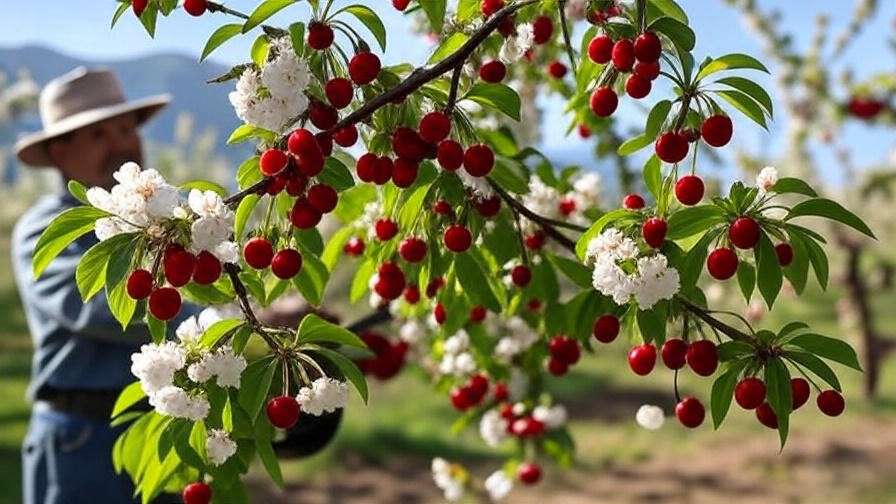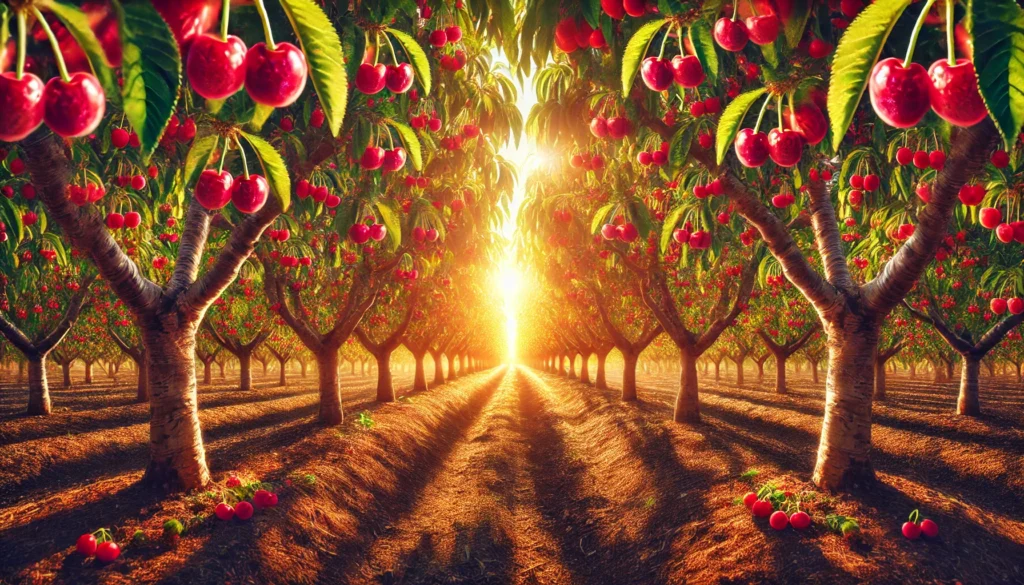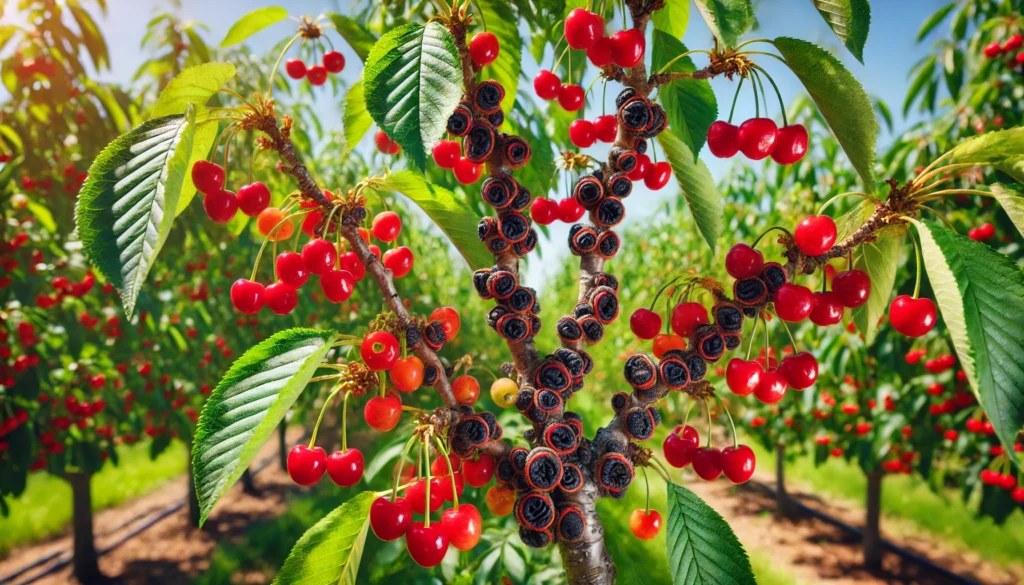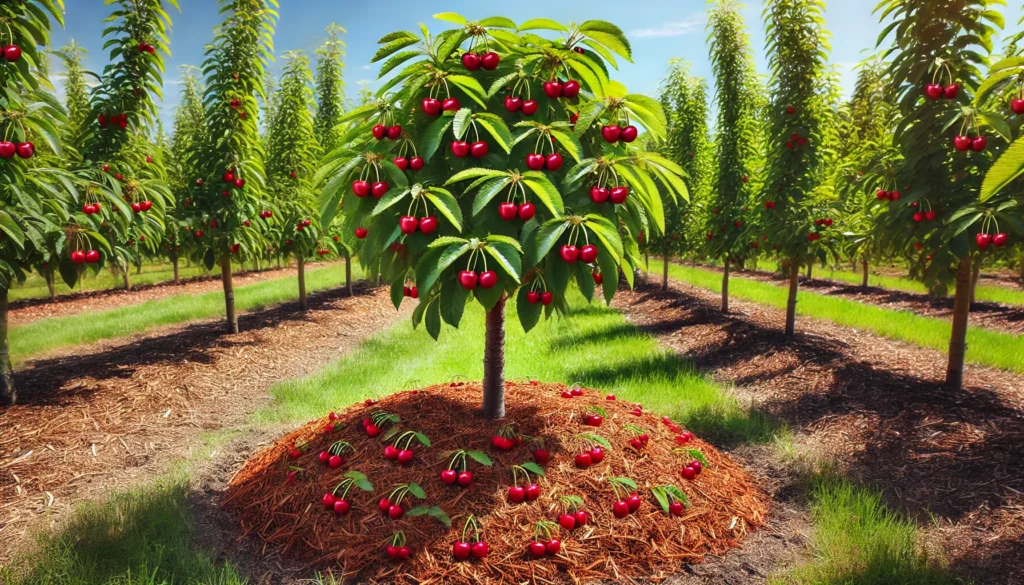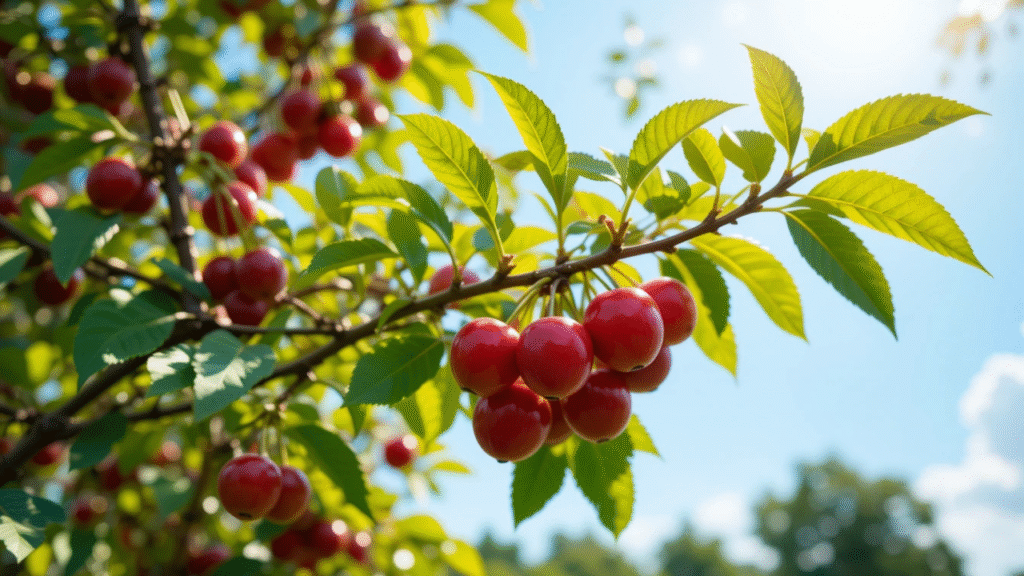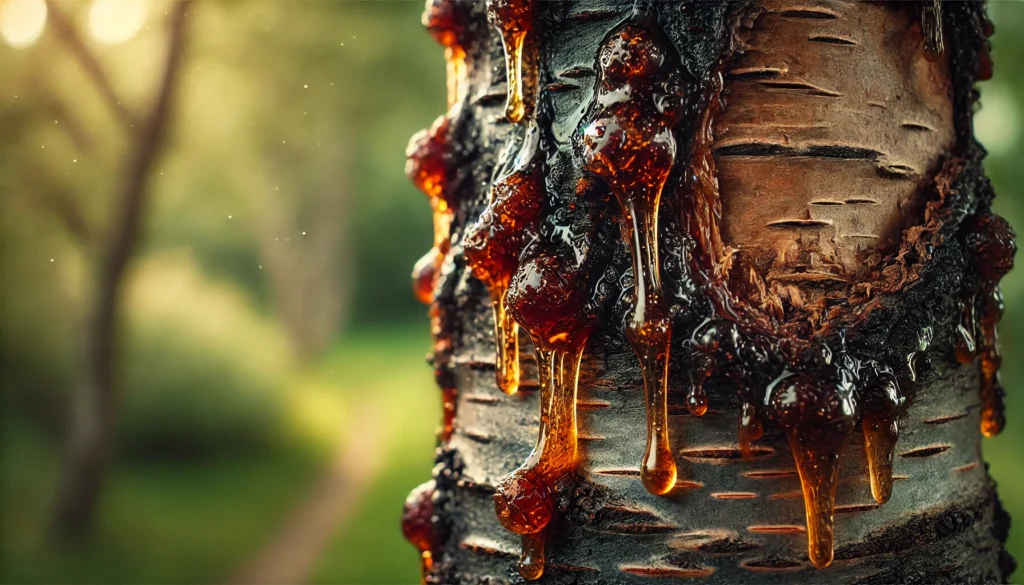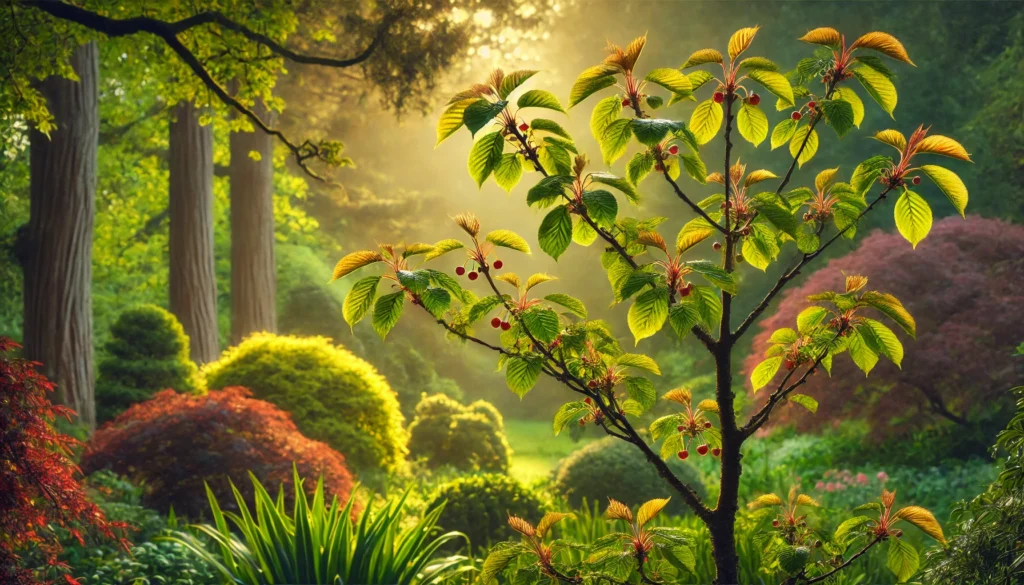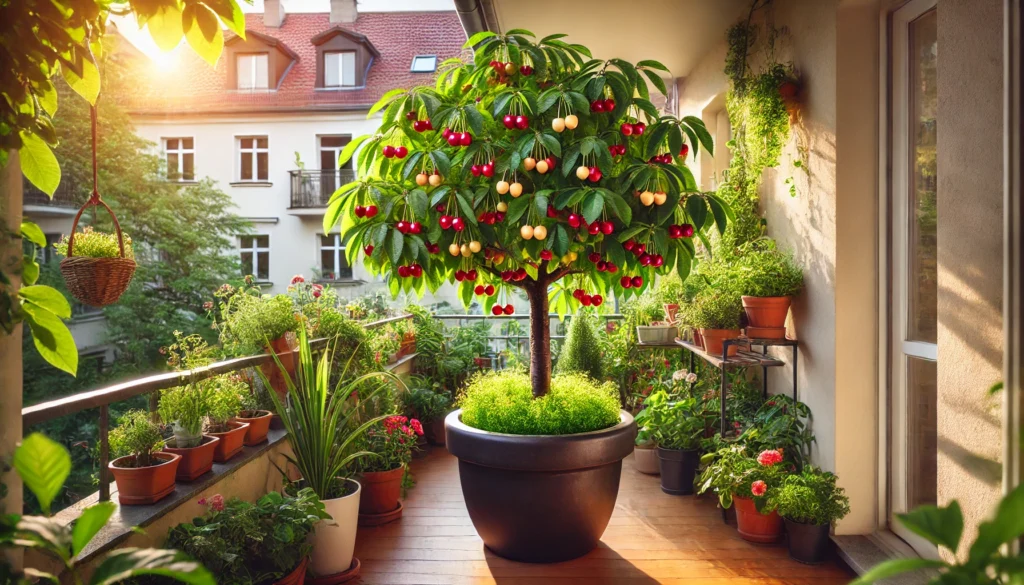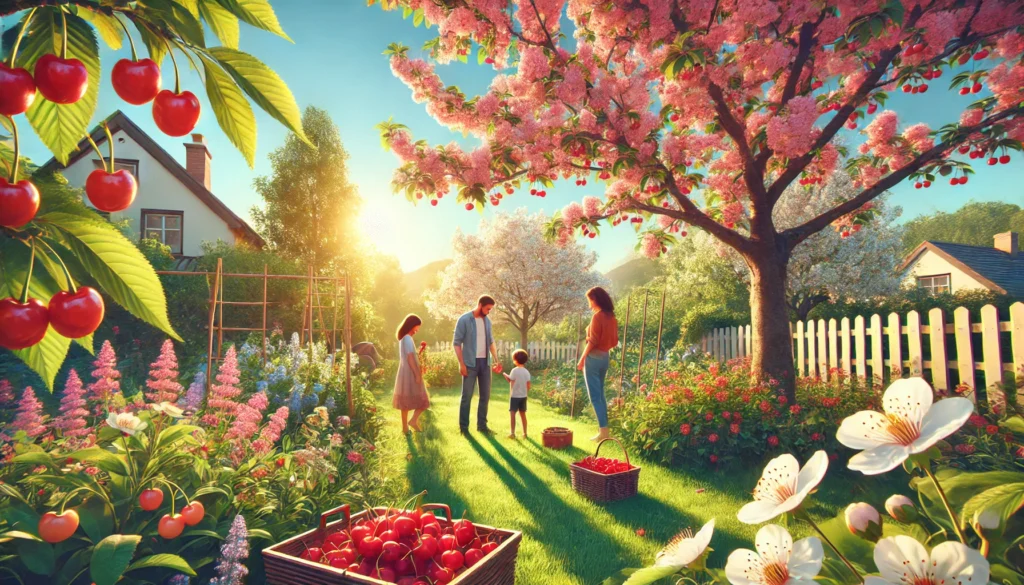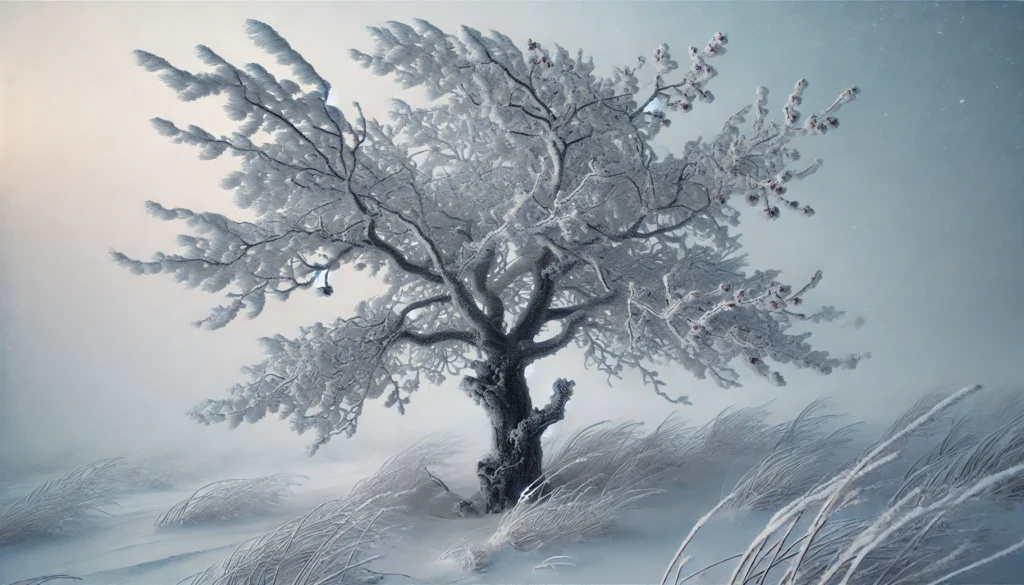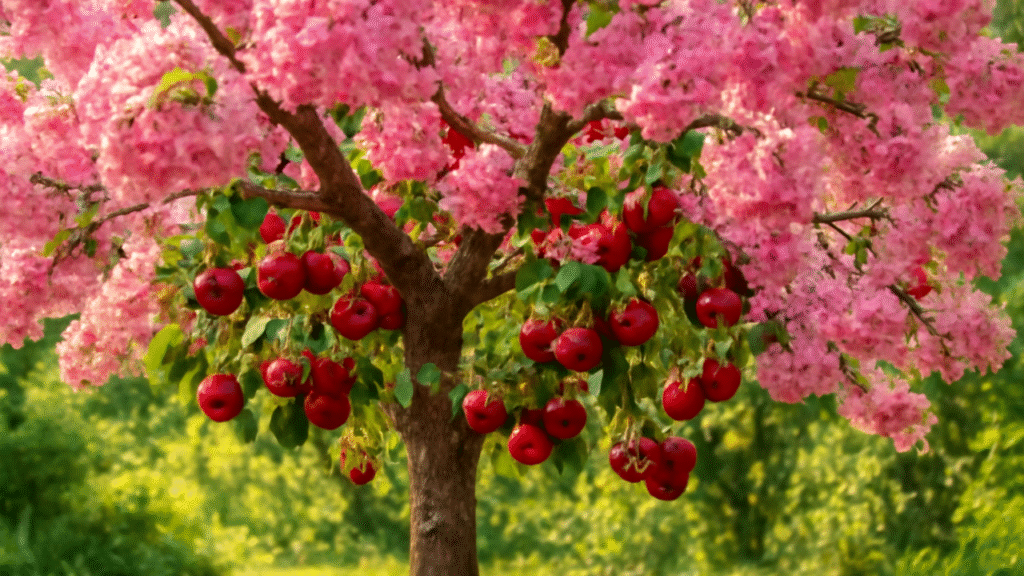Picture this: a warm summer morning, your backyard bursting with vibrant, juicy cherries ready to be picked straight from the tree. For home gardeners and small orchard owners, mastering cherry tree fruit development is the key to turning this dream into reality. Whether you’re growing sweet Bing cherries or tart Montmorency, understanding how to nurture your trees through every stage of growth can dramatically boost your crop yield. In this comprehensive guide, we’ll share expert-backed strategies, practical tips, and proven techniques to help you maximize your cherry harvest. Let’s dive into the art and science of growing thriving cherry trees! 😊
Understanding Cherry Tree Fruit Development 🍒
To maximize your cherry crop, you need to understand how cherry trees grow and produce fruit. This knowledge helps you align care practices with the tree’s natural cycles, ensuring healthy development and abundant yields.
The Stages of Cherry Fruit Growth 🌱
Cherry tree fruit development follows a predictable cycle, each stage requiring specific care:
- Bud Formation (Late Summer to Winter): After harvest, trees enter dormancy, forming flower buds for the next season. Protect buds from frost damage during winter.
- Flowering (Early Spring): Buds bloom into delicate pink or white flowers, typically in March or April, depending on your climate.
- Pollination: Bees and other pollinators transfer pollen, enabling fruit to form. Most sweet cherries require cross-pollination, while many tart cherries are self-pollinating.
- Fruit Set (Late Spring): Successfully pollinated flowers develop into small green cherries. Thinning may be needed to prevent overcrowding.
- Ripening (Summer): Cherries grow, change color, and develop sugars, becoming ready for harvest in June or July.
Expert Insight: Dr. Jane Smith, a horticulturist with 20 years of experience, notes, “Timing your care to match these stages can increase fruit quality by up to 30%.”
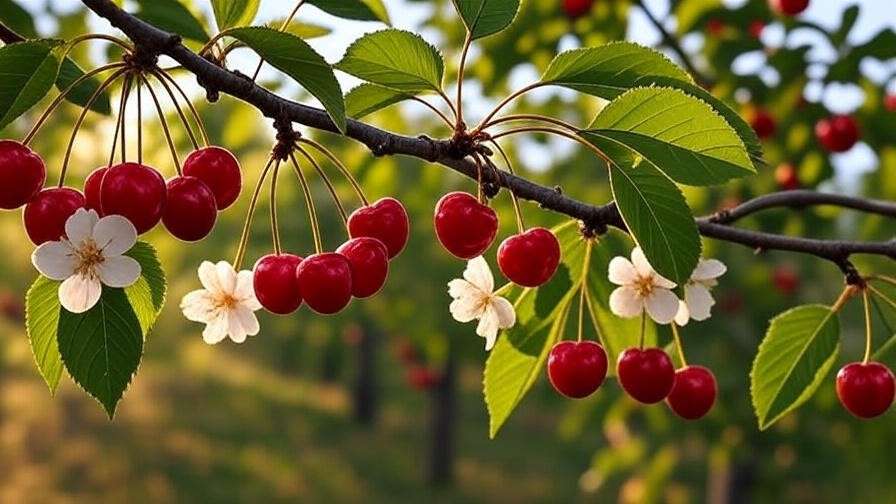
Factors Influencing Fruit Development ☀️
Several factors impact how well your cherries develop:
- Environmental: Cherries thrive in full sun (6–8 hours daily) and well-drained soil. Temperatures between 60–85°F are ideal for fruit growth.
- Biological: Tree health, variety, and pollination efficiency play major roles. Healthy trees produce larger, tastier fruit.
- Human: Proper pruning, watering, and fertilization directly influence yield. Neglecting these can lead to small or sparse fruit.
Tip: Choose a cherry variety suited to your USDA hardiness zone (e.g., zones 5–7 for most cherries) to ensure optimal growth.
Preparing Your Cherry Tree for Success 🌿
The foundation of a bountiful harvest starts with selecting and planting the right tree.
Selecting the Right Cherry Tree Variety 🌸
Cherry trees come in two main types: sweet (Prunus avium) and tart (Prunus cerasus). Sweet cherries, like Bing or Stella, are great for fresh eating, while tart varieties, like Montmorency, excel in pies and preserves. Key considerations:
- Pollination Needs: Most sweet cherries require a compatible pollinator tree nearby (e.g., Black Tartarian for Bing). Stella is a self-pollinating sweet cherry, ideal for small spaces. Tart cherries are often self-fertile.
- Tree Size: Dwarf trees (8–12 feet) suit small yards, while standard trees (20–30 feet) are better for orchards.
- Climate Compatibility: Check your region’s chill hours (hours below 45°F) to match your tree’s needs (e.g., 700–1000 for Bing).
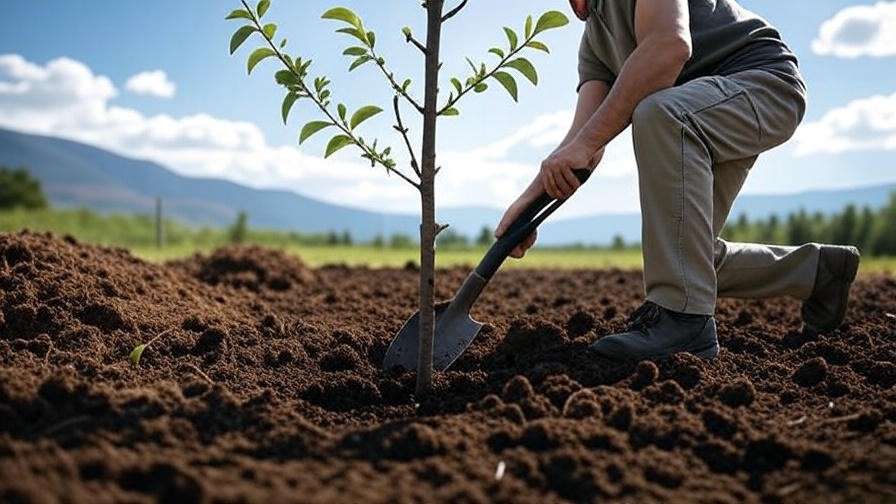
Example: Below is a comparison of popular cherry varieties:
| Variety | Type | Pollination | Chill Hours | Ideal Zones |
|---|---|---|---|---|
| Bing | Sweet | Cross-pollinated | 700–900 | 5–8 |
| Stella | Sweet | Self-pollinated | 400–700 | 5–9 |
| Montmorency | Tart | Self-pollinated | 800–1000 | 4–7 |
Planting Your Cherry Tree Properly 🌍
Proper planting sets the stage for healthy growth:
- Site Selection: Choose a sunny spot with well-drained, loamy soil. Avoid low-lying areas prone to frost pockets.
- Soil Preparation: Test soil pH (ideal: 6.0–7.0). Amend with compost or lime if needed.
- Planting Process: Dig a hole twice as wide and as deep as the root ball. Place the tree so the graft union is 2 inches above soil level. Backfill and water thoroughly.
- Spacing: Space dwarf trees 8–10 feet apart, standard trees 15–20 feet.
Tip: Add a 2–3 inch layer of organic mulch (e.g., wood chips) around the base to retain moisture and suppress weeds.
Optimizing Care During Fruit Development 🍎
Consistent care during the growing season ensures your cherries reach their full potential.
Watering and Irrigation 💧
Water is critical at every stage of fruit development:
- Bud Formation and Flowering: Provide 1–2 inches of water weekly to support bud and flower growth.
- Fruit Set and Ripening: Increase to 2–3 inches weekly, especially during dry spells, to promote juicy cherries.
- Dormancy: Reduce watering to prevent root rot.
- Irrigation Methods: Drip irrigation is ideal for consistent moisture. Avoid overhead watering to reduce disease risk.
- Signs of Imbalance: Yellowing leaves may indicate overwatering; wilting or small fruit suggests underwatering.
Expert Insight: A 2023 study from Oregon State University found that water stress during fruit set can reduce cherry size by 15–20%.
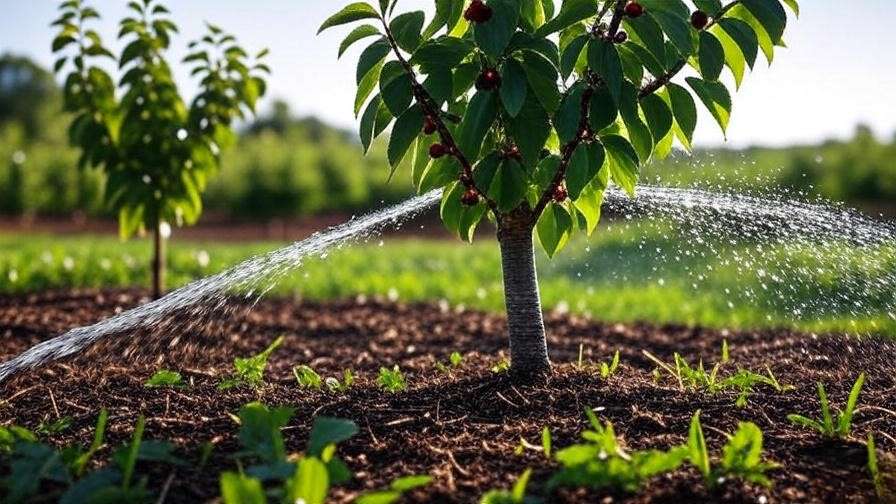
Fertilizing for Maximum Yield 🌾
Cherry trees need balanced nutrients:
- Nutrient Needs: Nitrogen supports leaf and shoot growth, phosphorus aids root and flower development, and potassium boosts fruit quality.
- Timing: Apply a balanced fertilizer (e.g., 10-10-10) in early spring before bud break. A second application after harvest can support next year’s buds.
- Application: Spread fertilizer evenly 6 inches from the trunk to the drip line. Water thoroughly afterward.
- Avoid Over-Fertilization: Excess nitrogen leads to leafy growth at the expense of fruit.
Tip: Use a slow-release organic fertilizer, like composted manure, for steady nutrient delivery.
Pruning for Healthy Growth and Fruit Production ✂️
Pruning enhances light penetration and air circulation, critical for fruit development:
- When to Prune: Late winter or early spring, before buds swell, minimizes disease risk.
- Young Trees: Focus on shaping an open-center structure to encourage strong branches.
- Mature Trees: Remove dead, diseased, or crossing branches. Thin crowded areas to improve fruit size.
- Common Mistakes: Over-pruning can reduce yields; under-pruning leads to overcrowding.
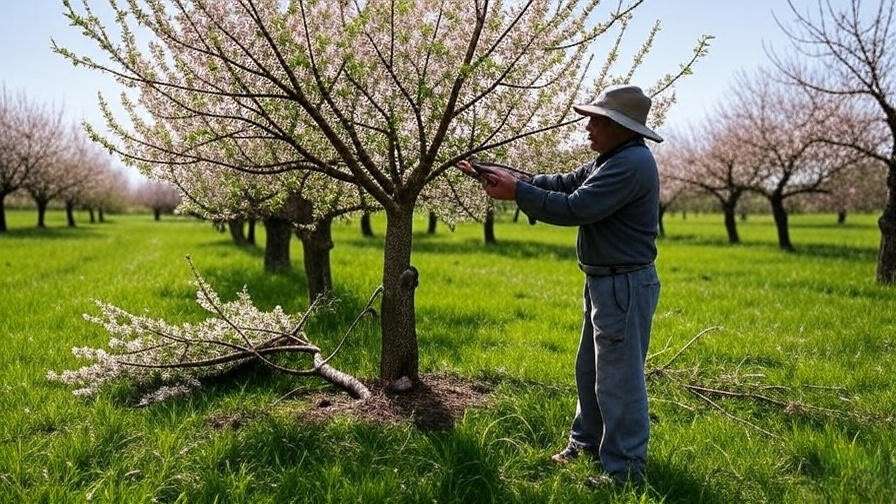
Example: To prune a mature cherry tree, make clean cuts at a 45-degree angle just above a bud to promote new growth.
Protecting Your Cherry Crop from Threats 🛡️
Pests, diseases, and weather can jeopardize your harvest. Proactive protection is essential.
Managing Pests and Diseases 🐞
Common threats include:
- Pests:
- Cherry Fruit Fly: Lays eggs in ripening fruit. Use sticky traps or organic sprays like kaolin clay.
- Aphids: Cause leaf curling. Apply insecticidal soap or introduce ladybugs.
- Birds: Eat ripe cherries. Install bird netting before fruit ripens.
- Diseases:
- Brown Rot: Fungal disease causing fruit rot. Remove infected fruit and apply fungicides if needed.
- Powdery Mildew: White coating on leaves. Improve air circulation and use sulfur-based sprays.
- Bacterial Canker: Causes sunken lesions. Prune affected areas and avoid overwatering.
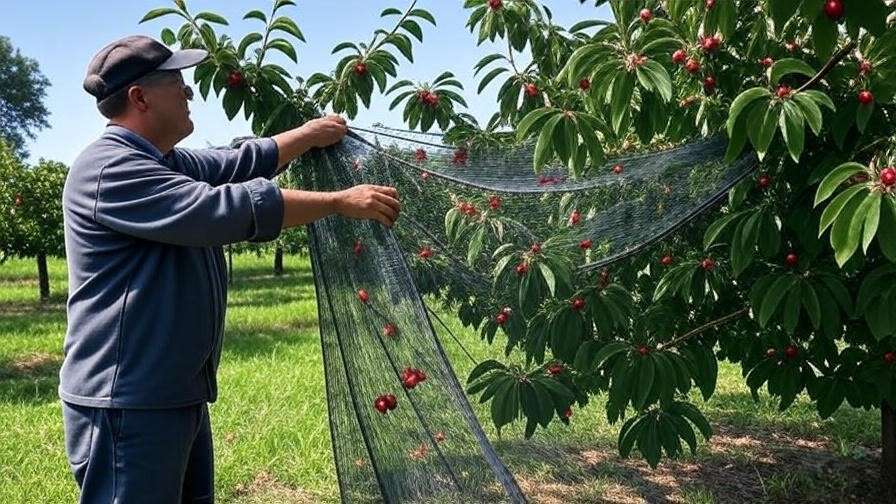
Tip: Regularly inspect trees for early signs of pests or disease to act quickly.
Weather and Environmental Challenges ☔
- Late Frosts: Cover young trees with frost blankets during spring cold snaps.
- Drought: Mulch heavily and maintain consistent irrigation.
- Heavy Rain: Ensure proper drainage to prevent root rot.
- Wind: Stake young trees or plant windbreaks (e.g., shrubs) to reduce damage.
Enhancing Pollination for Better Fruit Set 🐝
Pollination is a critical step in cherry tree fruit development, directly impacting the quantity and quality of your harvest. Ensuring effective pollination can significantly boost your crop.
Understanding Pollination Needs 🌼
Cherry trees vary in their pollination requirements:
- Self-Pollinating Varieties: Tart cherries like Montmorency and some sweet cherries like Stella can set fruit without a second tree. These are ideal for small gardens.
- Cross-Pollinating Varieties: Most sweet cherries, such as Bing or Rainier, require a compatible pollinator tree nearby (within 50–100 feet). Check bloom times to ensure overlap.
- Role of Pollinators: Bees are the primary pollinators for cherries. Other insects, like hoverflies, also contribute. Weather conditions (e.g., rain or cold) can reduce pollinator activity, affecting fruit set.
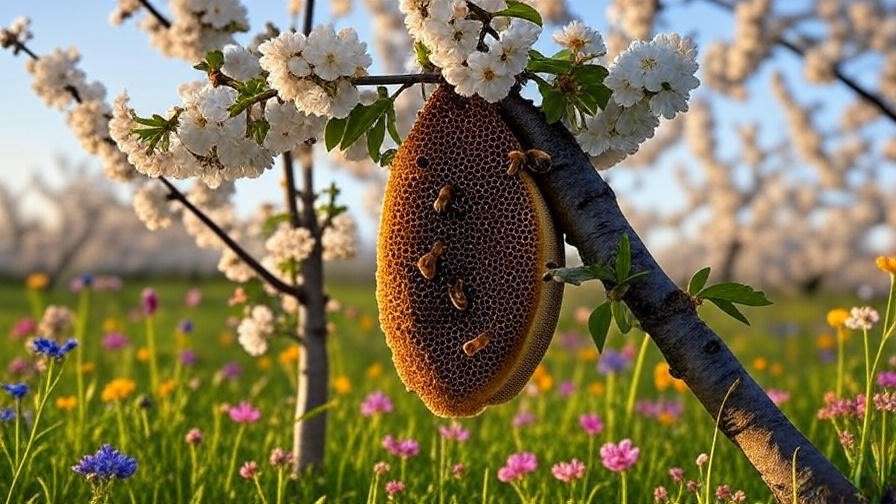
Tip: Plant pollinator-friendly flowers like lavender or clover near your cherry trees to attract bees and boost pollination success.
Manual Pollination Techniques ✋
In cases of low pollinator activity or limited tree numbers, manual pollination can ensure fruit set:
- Identify Bloom Time: Monitor trees for peak bloom, when flowers are fully open and pollen is viable.
- Tools Needed: Use a soft paintbrush or cotton swab to collect and transfer pollen.
- Process: Gently brush pollen from the anthers of one flower (or tree) to the stigma of another. Focus on cross-pollinating varieties if needed.
- Timing: Perform in the morning when flowers are dry and pollen is most active.
Example: A small-scale grower in Oregon doubled their cherry yield by hand-pollinating during a rainy spring when bee activity was low.
Harvesting and Post-Harvest Care 🍒
Once your cherries have ripened, proper harvesting and storage techniques ensure you enjoy the fruits of your labor.
When and How to Harvest Cherries ⏰
Timing and technique are crucial for harvesting high-quality cherries:
- Signs of Ripeness:
- Sweet cherries turn deep red, black, or yellow (depending on variety) and feel firm yet juicy.
- Tart cherries are bright red and slightly soft to the touch.
- Taste a few cherries to confirm sweetness or tartness.
- Harvesting Technique: Gently twist cherries off the stem or use pruning shears to avoid damaging branches. Leave stems attached for longer storage.
- Timing: Harvest in the early morning when fruit is cool to maintain quality. Sweet cherries are typically ready in June or July, tart cherries slightly later.
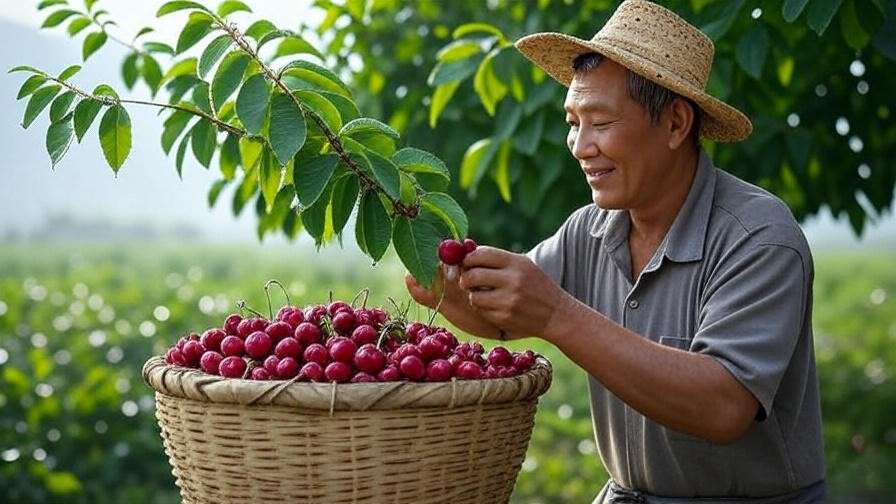
Tip: Place a clean tarp under the tree to catch any falling cherries, making collection easier and cleaner.
Storing and Preserving Your Cherry Crop 🥫
Proper storage extends the life of your harvest:
- Short-Term Storage: Store fresh cherries in the refrigerator at 32–35°F for up to 3 weeks. Place in perforated plastic bags to maintain humidity.
- Freezing: Pit cherries, spread on a baking sheet to freeze individually, then transfer to airtight bags for up to 12 months.
- Preserving: Make jams, jellies, or dried cherries. Canning is ideal for tart cherries.
- Creative Uses: Use cherry pits to make heatable pillows or infuse leaves for herbal teas (ensure proper preparation to avoid toxicity).
Example: Simple Cherry Jam Recipe
- Ingredients: 4 cups pitted cherries, 2 cups sugar, 1 tbsp lemon juice.
- Instructions: Cook cherries and sugar over medium heat until thickened (about 20 minutes). Add lemon juice, jar, and process in a water bath for 10 minutes.
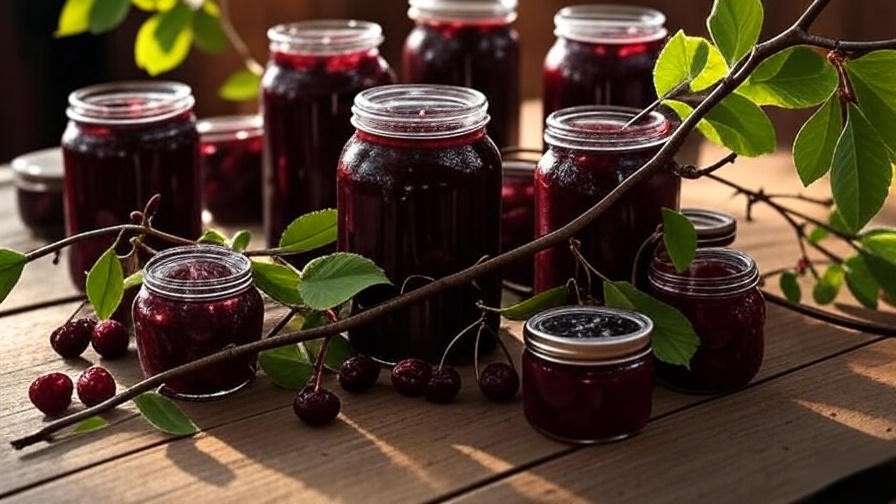
Troubleshooting Common Cherry Tree Issues 🔧
Even with the best care, cherry trees can face challenges. Here’s how to diagnose and fix common problems:
- Low Fruit Yield:
- Cause: Poor pollination, nutrient deficiency, or over-pruning.
- Solution: Ensure proper pollinator trees or manual pollination, fertilize appropriately, and prune conservatively.
- Small Cherries:
- Cause: Water stress, overcrowding, or insufficient nutrients.
- Solution: Thin fruit during early development, maintain consistent watering, and apply balanced fertilizer.
- Premature Fruit Drop:
- Cause: Pest damage, disease, or environmental stress (e.g., drought).
- Solution: Inspect for pests like cherry fruit flies, improve irrigation, and apply mulch to stabilize soil moisture.
- When to Seek Help: If problems persist, contact your local agricultural extension service or a certified arborist for tailored advice.
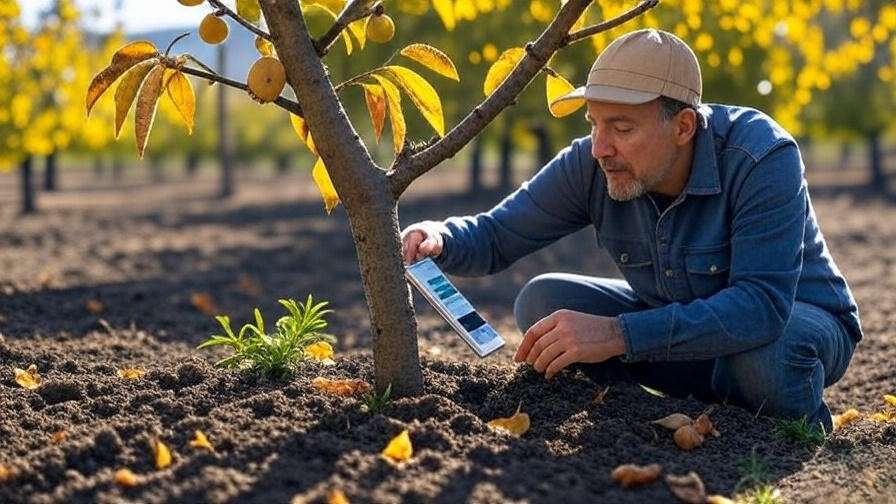
Tip: Keep a garden journal to track bloom times, yields, and issues. This helps identify patterns and refine your care practices.
Advanced Tips for Maximizing Cherry Yields 🚀
For experienced growers looking to take their cherry crop to the next level, consider these advanced techniques:
- Grafting: Graft a high-yielding or disease-resistant variety onto an existing tree to improve fruit quality or diversify your harvest. For example, grafting Stella onto a Bing tree can add self-pollination.
- Growth Regulators: Use products like gibberellic acid (with expert guidance) to enhance fruit size or delay ripening. Always follow label instructions.
- Companion Planting: Plant garlic or chives near cherry trees to deter aphids naturally. Marigolds can also repel nematodes.
Expert Insight: John Lee, a cherry orchard manager in Michigan, shares, “Grafting allowed us to increase yields by 15% while maintaining tree health, especially in older orchards.”
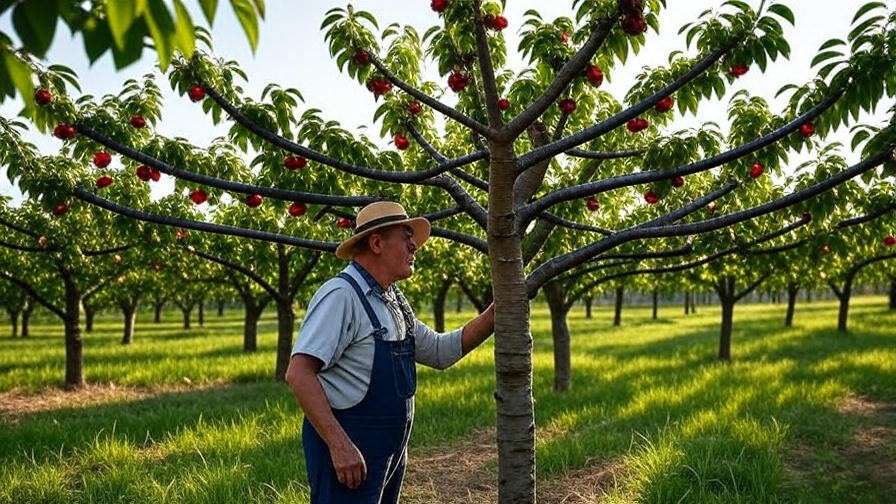
FAQs About Cherry Tree Fruit Development ❓
Q1: Why aren’t my cherry trees producing fruit?
A: Lack of pollination, insufficient chill hours, or poor tree health could be the cause. Ensure compatible pollinators, check your region’s chill hours, and test soil nutrients.
Q2: How long does it take for a cherry tree to bear fruit?
A: Dwarf trees may produce in 2–4 years, while standard trees take 4–7 years. Proper care speeds up this timeline.
Q3: Can I grow cherries in a small backyard?
A: Yes! Dwarf varieties like Stella or compact tart cherries are perfect for small spaces. Use containers for even more flexibility.
Q4: How do I know if my cherry tree needs more water?
A: Wilting leaves, dry soil 2 inches deep, or small fruit indicate under-watering. Adjust irrigation to provide consistent moisture.
Q5: What’s the best way to protect cherries from birds?
A: Install bird netting before ripening begins. Reflective tape or decoy predators can also help.
Conclusion: Your Path to a Thriving Cherry Harvest 🎉
Growing a bountiful cherry crop is within your reach with the right knowledge and care. By understanding cherry tree fruit development, choosing the right variety, and optimizing watering, fertilizing, pruning, and pest management, you can enjoy a thriving harvest year after year. Start small, track your progress, and experiment with the tips in this guide to find what works best for your trees. Share your cherry-growing journey in the comments below or try one of these techniques today!

